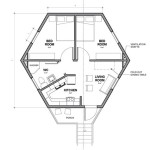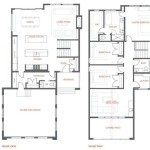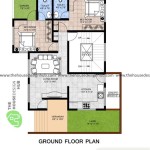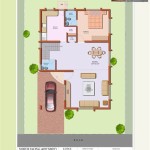How To Make A Floor Plan In Excel
Microsoft Excel, primarily known for its spreadsheet capabilities, also offers functionalities that can be leveraged for creating basic floor plans. While specialized CAD (Computer-Aided Design) software is generally preferred for architectural drawings, Excel provides a viable alternative for simple designs, space planning, and preliminary conceptualization, particularly for users already familiar with the program. Using Excel for floor planning allows for creating visual representations of rooms and buildings, calculating areas, and experimenting with different layouts without investing in specialized software. The process involves using cells as a grid, adjusting cell sizes to represent scale, and employing formatting tools to create walls, doors, windows, and furniture.
The advantage of using Excel lies in its accessibility and ease of use for individuals with limited CAD experience. Its familiar interface and intuitive tools make it easier to grasp the fundamentals of floor plan creation. Moreover, Excel's calculation features can be utilized to automatically compute room areas based on the dimensions represented in the floor plan. However, it is crucial to acknowledge that Excel is not a substitute for professional-grade architectural software. Its capabilities are limited in terms of precision, detailing, and the ability to generate complex architectural elements. Therefore, floor plans created in Excel are best suited for preliminary planning, space organization, and basic visualization purposes.
Key Point 1: Preparing the Excel Worksheet for Floor Plan Creation
The initial step in creating a floor plan in Excel involves preparing the worksheet to function as a drawing grid. This involves adjusting the cell sizes to create a consistent scale and setting up gridlines for visual guidance. The goal is to establish a canvas where each cell represents a specific unit of measurement, such as inches or centimeters, allowing for accurate representation of room dimensions.
To begin, open a new Excel worksheet. The default cell sizes are not ideal for floor planning, so they need to be adjusted. Select all cells in the worksheet by clicking the triangle in the top-left corner where the row and column headers intersect. Alternatively, use the keyboard shortcut Ctrl+A (or Command+A on macOS). With all cells selected, right-click on any column header (e.g., A, B, C) and choose "Column Width." Enter a smaller value for the column width. A value between 2 and 4 is a good starting point, but experimentation may be necessary to achieve the desired scale. Similarly, right-click on any row header (e.g., 1, 2, 3) and choose "Row Height." Adjust the row height to a value that is proportionate to the column width to create square or near-square cells. A value of 15 to 25 usually offers a reasonable starting point.
After adjusting the cell sizes, enable the gridlines to enhance the visual structure of the floor plan. While gridlines are usually displayed by default, it's worth confirming that they are visible. Go to the "View" tab on the Excel ribbon and ensure that the "Gridlines" checkbox is selected in the "Show" group. This will display the grid lines, making it easier to draw walls and other elements accurately.
Consider setting up a scale reference within the worksheet. Designate a specific number of cells to represent a known measurement, such as one foot or one meter. For example, ten cells could represent one foot. This scale reference will help ensure that the floor plan dimensions are accurate and consistent. Make a note of this scale on the worksheet for easy reference throughout the drawing process.
Finally, before starting the actual drawing, consider creating a legend or key within the worksheet. This legend will define the symbols and colors used to represent different elements in the floor plan, such as walls, doors, windows, and furniture. This will improve the clarity and readability of the floor plan, especially when sharing it with others.
Key Point 2: Drawing Walls, Doors, and Windows Using Cell Borders and Formatting
With the worksheet prepared, the next step involves drawing the walls, doors, and windows using Excel's cell border formatting capabilities. The key is to strategically apply borders to cells to represent these architectural features, creating a visual representation of the floor plan layout.
To draw walls, select the range of cells that correspond to the length and thickness of the wall. For example, if the scale is ten cells per foot and the wall is ten feet long, select a row of 100 cells. To represent the thickness of the wall, select another row of cells adjacent to the first. Once the cells are selected, go to the "Home" tab on the Excel ribbon and look for the "Font" group. Click the dropdown arrow next to the "Borders" icon (which looks like a windowpane). From the dropdown menu, choose "All Borders" to apply borders to all sides of the selected cells. Alternatively, you can select specific borders, such as "Top Border," "Bottom Border," "Left Border," and "Right Border," to create different wall configurations. For exterior walls, consider using a thicker border style to distinguish them from interior walls. To change the border style, select "Line Style" from the Borders menu and choose a thicker line. Then, apply the chosen style to the selected cells.
Representing doors and windows requires a similar approach, but with some modifications. For doors, select the cells representing the doorway opening and remove the borders that would otherwise form a continuous wall. This creates a gap in the wall to indicate the doorway. To indicate the direction of the door swing, draw a curved line or an arc using the "Insert" tab, "Shapes" option. Select a curved line or arc shape and draw it from the door opening towards the inside of the room, indicating the direction the door will swing when opened. You can adjust the size and curvature of the arc to accurately represent the door swing.
For windows, create a similar opening in the wall by removing the borders in the appropriate cells. To represent the window itself, add a different border style to the remaining cells within the opening. For instance, you could use a dashed line or a thinner solid line to indicate the window pane. Select the cells within the window opening and choose a border style from the "Line Style" menu in the Borders options. Apply the chosen style to the top, bottom, and side borders of the selected cells to represent the window frame.
Color coding can also be used to differentiate between different types of walls or window types. Use the "Fill Color" option in the "Font" group on the "Home" tab to fill the cells representing different wall types with different colors. For example, you could use a lighter color for interior walls and a darker color for exterior walls. Similarly, different window types, such as fixed windows and operable windows, can be represented using different colors or border styles.
Key Point 3: Adding Furniture and Annotations for Detailing and Clarity
Once the basic floor plan structure is established, the next step involves adding furniture and annotations to provide more detail and clarity. This helps visualize the space and how it will be used. Furniture can be represented using cell borders, color fills, and text labels. Annotations, such as dimensions and room names, can be added using text boxes or by directly typing into cells.
To represent furniture, select the cells corresponding to the size and shape of the furniture item. For example, if representing a sofa, select a rectangular range of cells that reflects the sofa's dimensions. Apply borders to these cells to outline the furniture item. You can use different border styles and colors to represent different types of furniture. For example, you could use a thicker border for large items like beds and sofas, and a thinner border for smaller items like chairs and tables. Use the "Fill Color" option to fill the cells with a color that represents the furniture material. For instance, you could use a brown color for wooden furniture and a gray color for upholstered furniture. Consider adding text labels within the furniture outline to indicate the type of furniture, such as "Sofa," "Bed," or "Table." Use the "Insert" tab and select "Text Box" to draw a text box within the furniture outline. Type the furniture label into the text box and format the text as needed.
Adding annotations is crucial for providing information about room dimensions and room names. To add dimensions, use the "Insert" tab and select "Shapes." Choose a line shape and draw lines representing the dimensions of the room or other features. Add text boxes adjacent to the dimension lines to indicate the length of the dimensions. Use a clear and concise format for the dimensions, such as "10 ft" or "3 m." To add room names, simply type the room name into a cell within the room area. Format the text as needed to make it clear and legible. Consider using a larger font size or a bold font style for room names. Alternatively, use a text box to add the room name, allowing for more flexibility in positioning and formatting the label.
For more complex annotations, such as notes about specific features or materials, use text boxes and arrows. Use arrows to point to the feature being described and add a text box next to the arrow with a detailed explanation. Use different font styles and colors to differentiate between different types of annotations. For example, you could use a blue font for notes about electrical features and a green font for notes about plumbing features.
Remember to periodically save the Excel floor plan to prevent data loss. Consider creating multiple versions of the floor plan as you experiment with different layouts and furniture arrangements. This allows you to easily revert to previous versions if needed. By carefully adding furniture and annotations, the Excel floor plan can be transformed from a basic outline into a more detailed and informative representation of the space.

3 Ways To Draw And Create A Floorplan In Excel Like Cad With Examples

How To Make Create A Floor Plan On Microsoft Excel Templates Examples 2024

How To Create A Floor Plan Using Excel

Floor Plan Templates Free Awesome Create For Excel Plans Warehouse

How To Make Create A Floor Plan On Microsoft Excel Templates Examples 2024

Automated Floor Plan Excel Template Building

How To Make A Floorplan In Excel Microsoft Tips Plan Floor Plans

How To Make A Floorplan In Excel Microsoft Tips

Create Floor Plan Using Ms Excel 5 Steps With Pictures Instructables

How To Make A Floorplan In Excel Microsoft Tips








